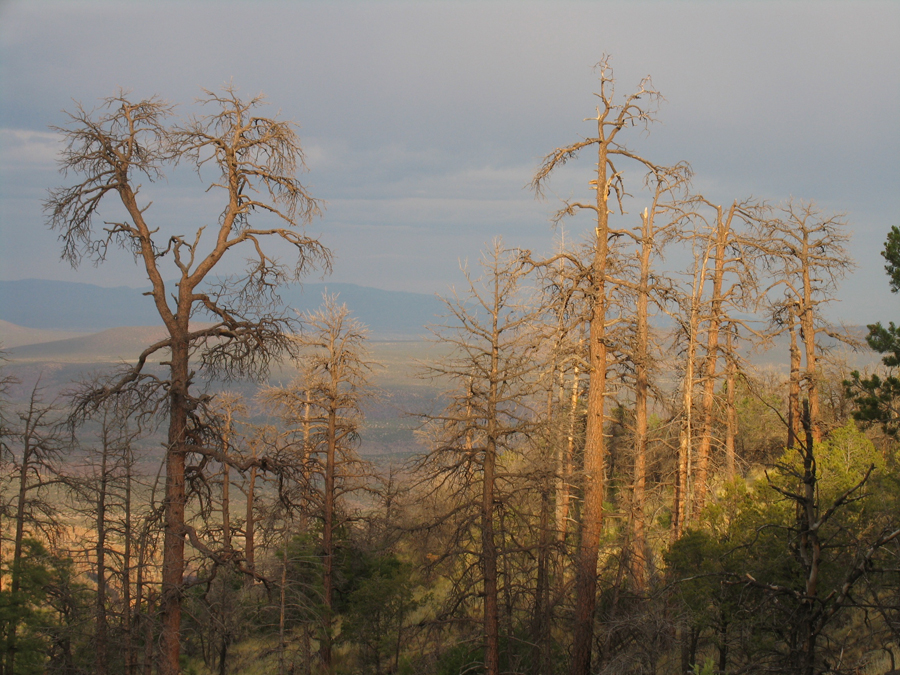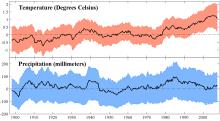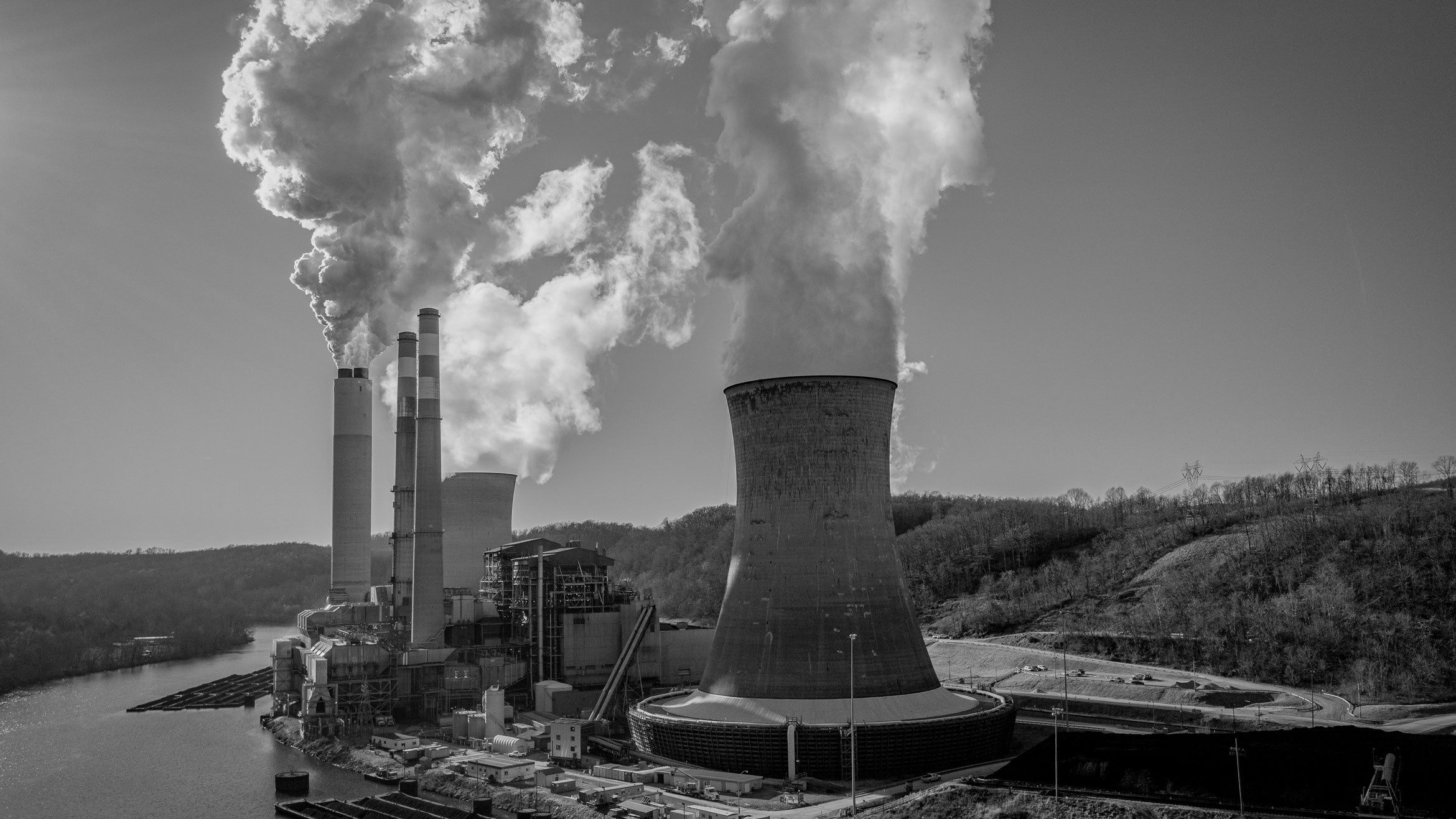
National Team of Scientists Predicts Continued Death of Forests In Southwestern U.S. Due to Problems Caused by Climate Change

If current climate projections hold true, the forests of the Southwestern United States face a bleak future, with more severe –– and more frequent –– forest fires, higher tree death rates, more insect infestation, and weaker trees. The findings by university and government scientists are published in this week's issue of the Proceedings of the National Academy of Sciences (PNAS).
"Our study shows that regardless of rainfall going up or down, forests in the Southwest U.S. are very sensitive to temperature –– in fact, more sensitive than any forests in the country," said first author Park Williams, postdoctoral researcher in the Department of Geography at UC Santa Barbara. "Forests in the Southwest are most sensitive to higher temperatures in the spring and summer, and those are the months that have been warming the fastest in this area."
Past forest studies have shown that warmer temperatures are associated with wildfires and bark beetle outbreaks. "We found that up to 18 percent of forest area in the Southwest –– millions of acres –– has experienced mortality due to severe wildfires and bark beetle outbreaks in the last 20 years," said Williams.
Co-author Joel Michaelsen, a professor of geography at UCSB, said: "In order to carry out this research project, Park Williams assembled a very comprehensive data set of over 1,000 tree ring chronologies from all across the United States." Michaelsen is a dendroclimatologist –– a scientist who studies climate using analysis of tree rings.
"Instead of using the chronologies to reconstruct past climate patterns, as is usually done in dendroclimatic work, the relationships between growth and climate were used to study possible impacts of future climate change on forest health," said Michaelsen. "One noteworthy finding was that tree growth throughout the Southwestern U.S., while quite sensitive to precipitation variations, is also negatively impacted by warmer temperatures. This is an important result, because predictions of future warming in the region are considerably more certain than any predictions of precipitation change."
Researchers found that historic patterns of vegetation change, insect outbreaks, fire activity, runoff, and erosion dynamics show that landscapes often respond gradually to incremental changes in climate and land-use stressors until a threshold is reached, at which time there may be dramatic landscape changes, such as tree die-offs or episodes of broad-scale fire or erosion. They also found that the stressors that contribute to tree mortality tipping points can develop over landscape and even sub-continental scales.
Co-author Christopher Still, an associate professor of geography at UCSB, said: "These predicted large-scale changes in forest cover and composition (i.e., types of tree species present) will have large implications for everything from snowpack and the river flows that our society depends on, to the intensity and frequency of fires, to the visual appearance of these landscapes that drives much of the tourism in this region."
Added co-author Craig D. Allen of the U.S. Geological Survey: "Such big, fast changes in Southwest forest vegetation could have significant effects on a wide range of ecosystem goods and services, from watershed protection and timber supplies to biodiversity and recreation. These emerging vulnerabilities present increasingly clear challenges for managers of southwestern forests to develop strategies to mitigate or adapt to the coming changes, in order to sustain these forested ecosystems and their benefits into the future."
Forests help retain rainwater and keep it from flowing down mountains immediately, noted Williams in explaining the importance of forests to landscapes and rivers. "When forests disappear," he said, "water runs downhill more quickly and takes the upper layers of soil with it."
According to Williams, the erosion makes it harder for future generations of trees to establish themselves and makes it more difficult for people to capture storm water as it flows from the mountains. In addition, erosion increases the amount of sediment flowing in rivers and settling in lakes, and causes water to remain in the forest long after the rain.
The paper also points to the many implications of these changes for future management and use of Southwest forests.
The scientific article is part of a special PNAS feature edition called "Climate Change and Water in Southwestern North America."
† Top photo: Dead ponderosa pines in the Jemez Mountains at Bandelier National Monument. The research team explained that they died due to drought and probably infestations of bark beetles. This photo was shot in summer 2006.
Credit: Craig D. Allen
†† Middle photo: A Limber pine tree core from Mt. Crested Butte, southwestern Colorado. This portion of the core is 1 inch long and contains 47 annual growth rings. Skinnier rings formed during years of poor growth due to drought and/or bark beetles. Core collected by Park Williams and Chris Still.
Credit: Park Williams, UCSB
††† Bottom photo: Temperature and precipitation in the southwestern United States from 1896-2009 compared to the 1950-1979 average. Solid black lines represent the average location. Shaded areas represent the least extreme 50% of locations. Data from the PRISM group at Oregon State University.
Credit: Park Williams, UCSB



